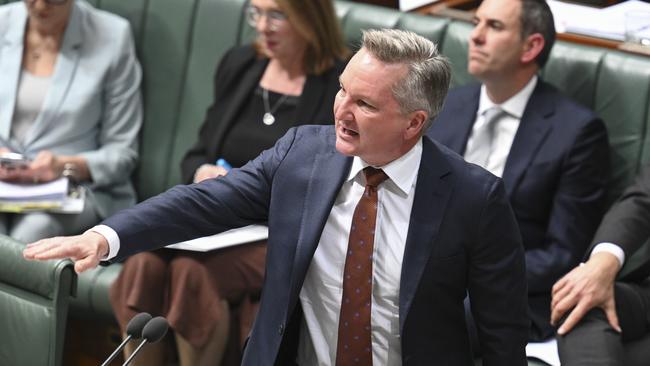Energy transition powered by wishful thinking

The government’s focus has centred on meeting these targets regardless of costs to households, the economy and our national interest. Legitimate concerns are described as the actions of “bad-faith actors” using “mistruths and outright misinformation”. Such comments may find favour in a speech to a sympathetic audience but do nothing to advance an important debate about our country’s future.
Any serious analysis of the energy transition should be grounded in fact, not wishful thinking. Let the facts speak for themselves.
Anticipating the loss of 90 per cent of our coal-fired generation in the next decade and with looming gas shortages, we need to ensure reliable baseload power into the future. The evidence shows the unreliability of intermittent, weather-dependent renewables. In July, the penetration of renewables in the grid fell to a low 10.2 per cent. It would be folly to believe you could rely on a predominantly renewables grid to power the economy.
Neither can there be any certainty about power prices with weather-dependent renewables. Across the past few months increased demand for heating has driven huge price volatility. Together with the lack of wind generation and a small number of unplanned forced outages, spot prices spiked to record levels.
On July 29 all the national electricity market regions registered simultaneous spot prices hikes at 18:00. The figures, expressed in megawatt hours, ranged from $3500 in Tasmania to $4092 in South Australia. The next evening at that time, prices rose between $15,600 in Tasmania and $17,377 in Victoria. At 20:15 the SA price reached $17,499.94 a megawatt hour. SA, with the highest penetration of renewables, took the prize for the highest prices.
So much for Energy Minister Chris Bowen trumpeting that wholesale power prices were falling. In the June quarter wholesale prices averaged $133 a megawatt hour, 23 per cent higher than the corresponding quarter last year. Far from receiving a cut of $275, prices have risen by 22 per cent, up to $1000, and will continue on this upward trajectory. Our power prices are among the world’s highest.
Last year, with falling investment in renewables, calls for greater government support grew louder. Bowen came to the rescue with yet another subsidy. His capacity investment scheme is based on taxpayers underwriting a vast expansion of 32 gigawatts of renewable energy.
Future risk will be transferred from investors in renewables to the taxpayer in secret contracts for difference. If revenues fall below the floor, taxpayers will fund the difference. Gas critical for firming and the viability of manufacturing was excluded from the scheme. We’re still in the dark about the total system costs of the transition, with estimates ranging from hundreds of billions into the trillions.
What are the aggregate costs from the public purse? Labor’s promise of transparency and accountability is undermined by non-disclosure and secrecy. Hopefully the Senate can pursue the public’s right to know.
There’s little progress to date in meeting the 2030 emissions and renewables targets. In Labor’s first year emissions grew by four million tonnes, a 0.8 per cent increase to June last year. Emissions across last year fell by a mere 0.5 per cent, registering a 29 per cent reduction below the 2005 base level. The Climate Change Authority’s 2023 report said the government “was not yet on track to meet its 2030 targets” and its policy agenda had “not yet translated into the emissions reductions we need”. Any claim the government is on track to reach a 42 per cent reduction, just falling short of target, is not based on fact, just wishful thinking.
Renewables have reached the halfway point at 40 per cent, with six years left to meet the target. The minister previously advised the 82 per cent target required installing 40 7MW wind turbines every month and 22,000 solar panels every day to 2030 as well as the transmission links. That won’t happen. Opposition in the regions is growing, even in Labor’s heartland seats, while social licence declines. Every transmission project is well over time, storage capacity is inadequate, Snowy 2.0 is delayed for years and battery storage limited to two to four hours.
There’s a lot at stake in this energy transition, so it’s necessary to see through the spin. According to reputable experts, the 2030 targets won’t be met. Despite this, the government is considering raising the 2035 emissions target to between 65 per cent and 75 per cent.
If we’re to avoid the pathway to economic calamity it’s surely time for a plan B informed by independent energy experts. The country needs an orderly energy transition plan that’s grounded in reality, not wishful thinking.





Changing an energy system is challenging. Governments have to ensure a reliable supply of electricity all day, every day. Ideally, in an orderly transition there would be like for like capacity replacement. The Albanese government has failed to balance the objectives of affordability and reliability as it embarked on its decarbonisation strategy. It legislated a 43 per cent reduction in emissions by 2030 that needs renewable energy to reach the 82 per cent target.